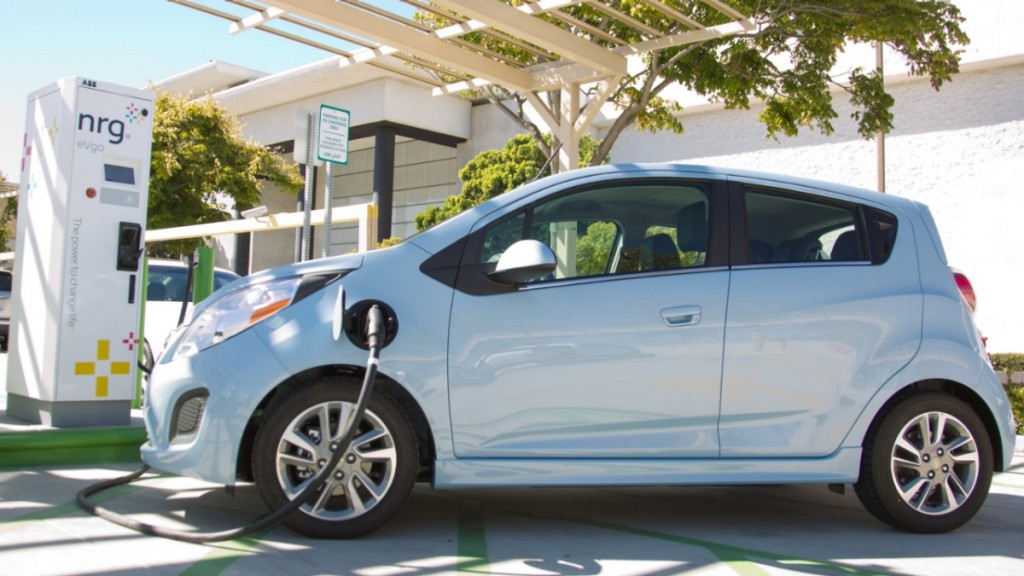The idea of traveling long distances in electric cars that have to be recharged after only 70 or 80 miles--or even 250 miles--may seem absurd to some.
But while even the fastest of DC fast-charging isn't quite as quick as refilling with gasoline, yet, longer road trips in electric cars are possible for a few and on the horizon for many more.
DON'T MISS: Life With Tesla Model S: NY-FL Supercharger Road Trip, Returning
As a lengthy post on the blog maintained by advocacy group Plug-In America points out, long-distance road trips aren't quite possible for many--but they're getting closer.
As author and PIA director Chad Schwitters points out, road trips aren't necessarily that common even among owners of gasoline cars.
But he notes that he was able to travel 11,000 miles in his Tesla Model S, using a combination of Tesla's Supercharger fast-charging stations plus occasional charging at public 240-Volt Level 2 charging stations, campgrounds, and the like.

Tesla Motors Supercharger network in Summer 2014 - map as of July 15, 2014
Schwitters notes that while the fast-growing Tesla Supercharger network worked as exactly as planned--pull in, plug in, depart 20 to 30 minutes later with the car recharged to 80 percent of capacity--the few routes where they weren't available required enormous planning and took far more time.
That's really the message of the piece: A pervasive network of DC fast chargers enables electric cars to cover long distances.
This is also apparent in the Electric Highway that connects the states of Oregon and Washington, which has even spawned its own "electric-car tourism," with state officials providing maps of scenic points that can be reached by electric car drivers.
ALSO SEE: Road Trips In A Tesla Model S Electric Car: Lessons Learned
Those DC fast chargers are the CHAdeMO standard, applicable largely to Nissan Leafs--and they have to be far more closely spaced given the Leaf's range of 70 to 80 miles. Tesla's Superchargers, on the other hand, can be spaced 200 miles or so apart.
But the transformative nature of DC fast charging was brought home once again when we tested a 2014 BMW i3 REx last week.
Pulling into one of the few DC fast-charging sites (this one in New Jersey) where the Combined Charging System, or CCS, standard is available, we recharged the electric car's battery to 80 percent in precisely 20 minutes.

Chevrolet Spark EV at CCS fast charging station in San Diego.
And just like a gas pump, the display showed the percentage of charge rising fast enough--ticking off 1 percent every 10 or 15 seconds--that it was obvious the stop would be less than half an hour all told.
The biggest challenge, of course, is that the U.S. now has three incompatible DC fast-charging standards: CHAdeMO, Tesla Supercharger, and CCS.
The solution is relatively easy, though: Charging stations with multiple cables, one per standard.
MORE: Now That's Combo Quick Charging: CHAdeMO, CCS, Tesla Supercharger
While the future of electric-car travel will gradually become apparent over the next few decades, early travelers like Schwitters (and our own David Noland, who documented his New York-to-Florida-and-back trip in his Tesla) can already see into that future.
And while the mythical American road trip remains largely a dream, rather than a reality, for the vast majority of drivers, a growing network of DC fast chargers will slowly enable the dream for more and more drivers.
[hat tip: Brian Henderson]
_______________________________________________













